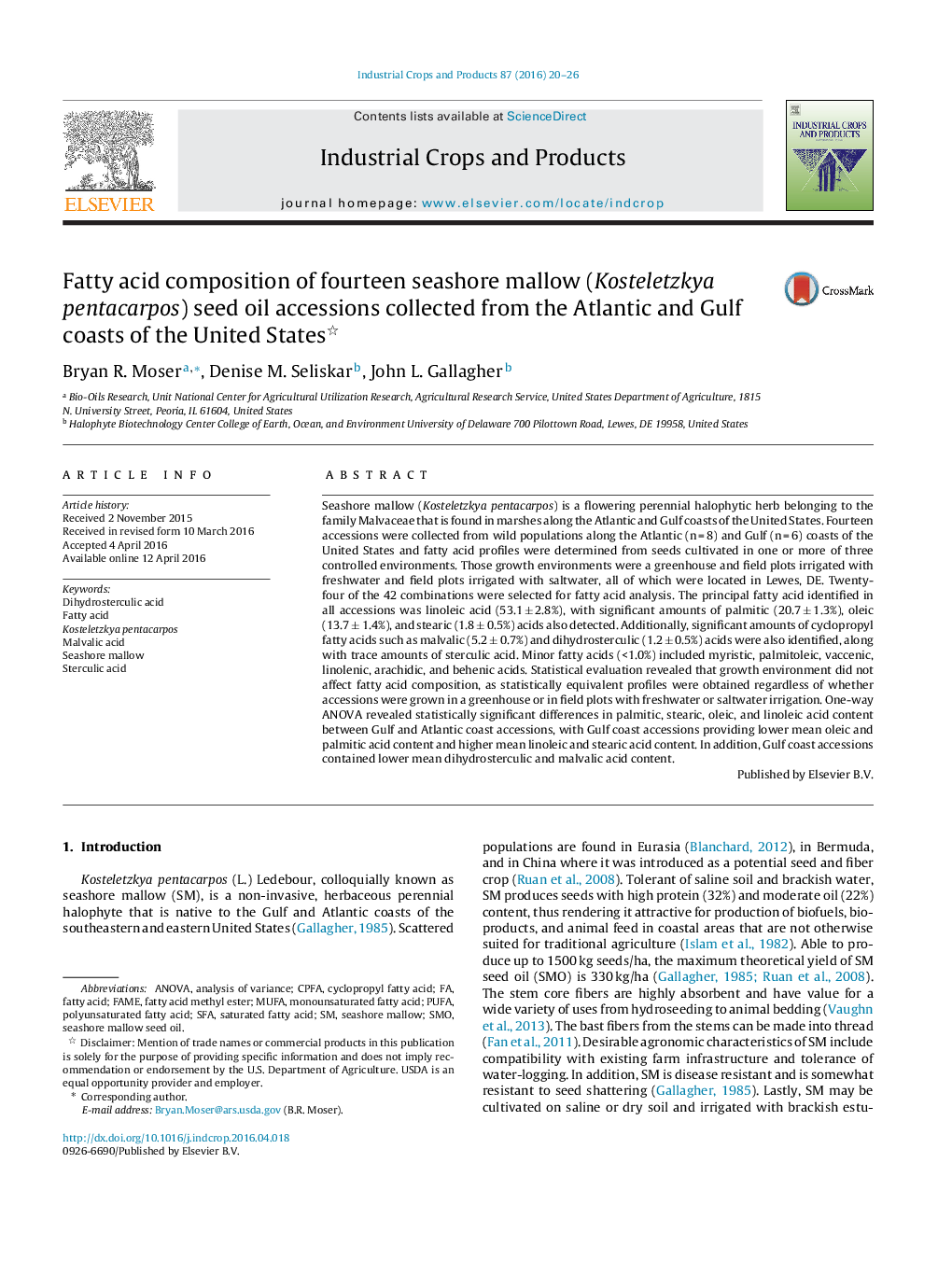| Article ID | Journal | Published Year | Pages | File Type |
|---|---|---|---|---|
| 4512228 | Industrial Crops and Products | 2016 | 7 Pages |
•Seashore mallow is a non-invasive perennial nonclonal halophytic dicot.•Accessions were collected from the Atlantic and Gulf coasts of the U.S.•Fatty acid profiles were determined from seeds extracted from 14 accessions.•Linoleic acid was the most abundant fatty acid but cyclopropyl acids were detected.•Gulf coast samples contained higher linoleic and lower palmitic content.
Seashore mallow (Kosteletzkya pentacarpos) is a flowering perennial halophytic herb belonging to the family Malvaceae that is found in marshes along the Atlantic and Gulf coasts of the United States. Fourteen accessions were collected from wild populations along the Atlantic (n = 8) and Gulf (n = 6) coasts of the United States and fatty acid profiles were determined from seeds cultivated in one or more of three controlled environments. Those growth environments were a greenhouse and field plots irrigated with freshwater and field plots irrigated with saltwater, all of which were located in Lewes, DE. Twenty-four of the 42 combinations were selected for fatty acid analysis. The principal fatty acid identified in all accessions was linoleic acid (53.1 ± 2.8%), with significant amounts of palmitic (20.7 ± 1.3%), oleic (13.7 ± 1.4%), and stearic (1.8 ± 0.5%) acids also detected. Additionally, significant amounts of cyclopropyl fatty acids such as malvalic (5.2 ± 0.7%) and dihydrosterculic (1.2 ± 0.5%) acids were also identified, along with trace amounts of sterculic acid. Minor fatty acids (<1.0%) included myristic, palmitoleic, vaccenic, linolenic, arachidic, and behenic acids. Statistical evaluation revealed that growth environment did not affect fatty acid composition, as statistically equivalent profiles were obtained regardless of whether accessions were grown in a greenhouse or in field plots with freshwater or saltwater irrigation. One-way ANOVA revealed statistically significant differences in palmitic, stearic, oleic, and linoleic acid content between Gulf and Atlantic coast accessions, with Gulf coast accessions providing lower mean oleic and palmitic acid content and higher mean linoleic and stearic acid content. In addition, Gulf coast accessions contained lower mean dihydrosterculic and malvalic acid content.
